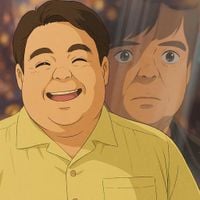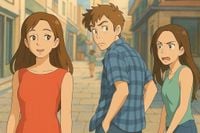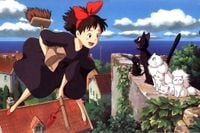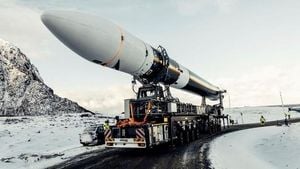In an unexpected twist of fate, the latest update to OpenAI's ChatGPT has sparked a creative frenzy across social media, with users generating a wave of images inspired by the beloved Studio Ghibli style. This phenomenon, which began on March 25, 2025, has not only captured the hearts of many but also raised significant concerns regarding copyright and the implications of artificial intelligence in the creative arts.
Sam Altman, CEO of OpenAI, acknowledged the overwhelming demand for the image generation feature, stating, "It’s very fun to see people loving images on ChatGPT, but our GPUs are melting. We’ll temporarily introduce limits on requests while we work to make it more efficient. I hope it won’t take long!" His comments came after the tool was updated to allow users to create images from text descriptions, leading to a flood of creations that resonated with the distinct aesthetic of Studio Ghibli, the renowned animation studio co-founded by Hayao Miyazaki.
In the days following the update, social media platforms were inundated with Ghibli-style images, ranging from whimsical memes and selfies to more somber representations of historical events. Users delighted in transforming personal photos into charming animations reminiscent of classics like "My Neighbor Totoro" and "Spirited Away." However, this creative outburst was met with restrictions as OpenAI implemented measures to prevent the generation of images mimicking the styles of living artists, a decision influenced by concerns over copyright infringement.
On March 26, many users reported receiving blocking messages when attempting to create images in the Studio Ghibli style, prompting OpenAI to clarify their stance. The company explained that they were adopting a "conservative approach" to avoid potential legal issues while still permitting broader artistic styles. This move directly affects the ability of users to replicate the unique artistry of Ghibli films, which are characterized by their detailed natural landscapes and expressive characters.
Hayao Miyazaki, a vocal critic of artificial intelligence in the creative process, previously expressed his disdain for AI-generated art. In a 2016 documentary, he stated, "I am utterly disgusted. I would never wish to incorporate this technology into my work. I strongly feel that this is an insult to life itself." His sentiments echo the concerns of many artists who fear that AI could undermine the value of human creativity.
The backlash against AI-generated art has been mounting, particularly among creative professionals. In 2024, over 10,000 actors and musicians signed an open letter condemning the "unlicensed use of creative works" to train AI models like ChatGPT. This growing discontent highlights the ongoing debate about the ethics of using existing artworks to develop new technologies, raising questions about ownership and the future of artistic expression.
Despite the controversies, the trend of generating Ghibli-inspired images has proven to be immensely popular. Users have taken to platforms like TikTok and X (formerly Twitter) to share their creations, with many expressing joy in seeing their memories transformed into a format reminiscent of their childhood. One user, Kouka Webb, shared her experience of turning wedding photos into Ghibli-style illustrations, saying, "I found a lot of joy in making these images. It was just a fun way to transform memories into a format I grew up with."
While the majority of reactions have been positive, the darker side of this trend has also emerged. Some users have created unsettling images depicting tragic events, such as the September 11 attacks and the assassination of JFK, further complicating the conversation around AI-generated art. This juxtaposition of lighthearted and somber themes has sparked discussions about the responsibilities of creators and the potential consequences of using AI technology in sensitive contexts.
As the popularity of the Studio Ghibli trend continues to rise, so do the concerns about the implications of such technology on the creative industry. Artists like Jonathan Lam, a storyboard artist, have voiced their frustrations, arguing that the ability to replicate styles undermines their unique identities. "For us, our style is actually our identity. It’s what differentiates us from one another," he explained.
In response to the growing concerns, OpenAI has reiterated its commitment to providing users with creative freedom while navigating the complex landscape of copyright and artistic integrity. Taya Christianson, a spokesperson for OpenAI, stated, "We continue to prevent generations in the style of individual living artists but allow broader studio styles, which people have used to generate and share some truly delightful and inspired fan creations." This approach aims to balance innovation in AI technology with respect for the original creators.
As the debate surrounding AI in the arts evolves, it remains to be seen how the industry will adapt to these changes. With the rise of AI-generated content, artists, creators, and technologists must engage in ongoing discussions to establish ethical guidelines and frameworks that protect the integrity of creative work while embracing the potential of new technologies.
The Studio Ghibli trend on ChatGPT serves as a microcosm of the larger conversation about the intersection of technology and creativity. As users continue to explore the boundaries of AI-generated art, the implications for artists and the future of creative expression will undoubtedly be significant. The dialogue surrounding these issues is likely to continue, prompting both excitement and caution as we navigate this new frontier in the world of art.









